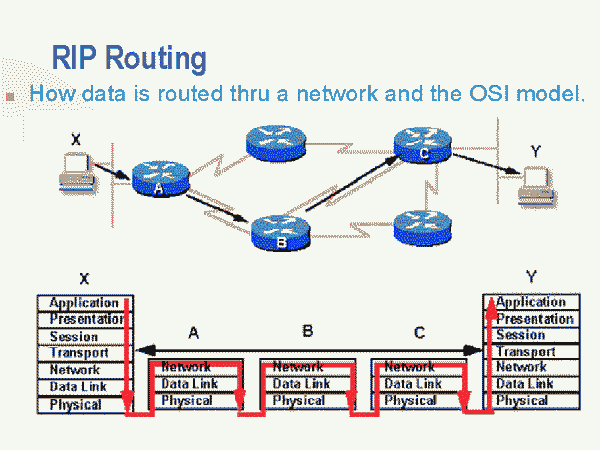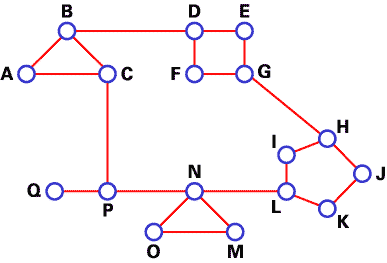
Learn Computer Science
Developing a more interesting World
"Computer science is no more about computers than astronomy is about telescopes."
Edsger Dijkstra
Free beginner - intermediate level computer science tutorials
Network Concepts
Tutoring > Operating Systems and Networks > Network Concepts
Computers and devices can send information to each other across networks. It's how the Internet works, it's how we send emails.

Media
Nodes (devices) can send information to each other across data connections (network links). The two main methods for this are:
-
Cable media.
-
Wireless media.
Whether or not two nodes are directly connected, if they can communicate (send information to each other) then they are said to be networked together.

Routing Information Protocol (RIP)
The RIP is an adaptive routing algorithm designed to prevent routing loops by limiting the number of "hops" that a message can take between nodes from it's source to it's destination. The maximum number of hops is 15. Any more than that is unreachable (or an infinite distance).
RIP uses User-Datagram Protocol as it's transport protocol (UDP).
A gateway host (with a router) sends its entire routing table (which lists all the other hosts it knows about) to its closest neighbor host every 30 seconds. The neighbor host in turn will pass the information on to its next neighbor and so on until all hosts within the network have the same knowledge of routing paths, a state known as network convergence.


Routing
Routing is the procees of selecting best paths in a network. Using packet-switching (delivery of sequences of data packets) routing directs data packets from their source to their destination. Types of routing:
Unicast - delivery of a message to a single specific node on a network.
Broadcast - delivery to every node on a network.
Multicast - delivery to a set of nodes that have expressed an interest in receiving the message.
Anycast - delivering a message to anyone out of a group of nodes, typically the one nearst the source.
Geocast - delivering a message to a geographical area.

Routing table
A routing table stores data about which nodes are in a network and sometimes, the distance (cost) to each node. It lists the routes to each destination along with it's cost. This is useful as each node has a routing table and from this, a data packet can be sent to anywhere in a network.
